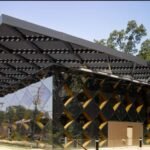Essential Design Elements and Techniques
Designing any structure, whether a building, a bridge, or an object, involves integrating essential elements and employing specific techniques to achieve functionality, aesthetics, and usability. Understanding these principles is crucial for creating visually appealing and purposeful designs that meet both practical and artistic objectives. Here, we delve into the key design elements and techniques that are essential for successful and impactful design projects.

Balance
Balance is fundamental in design, achieving a harmonious distribution of visual weight within a composition. It can be symmetrical, where elements are evenly distributed around a central axis, or asymmetrical, where elements vary in size and position but still achieve equilibrium. Balance ensures stability and visual coherence, guiding the viewer’s eye and enhancing overall perception.
Contrast
Contrast involves juxtaposing different elements to create visual interest and emphasis. This can be achieved through variations in color, texture, shape, size, or typography. Contrast highlights important elements, adds depth and dimension to designs, and creates a dynamic visual impact that captures attention effectively.
Proportion and Scale
Proportion refers to the relative size and scale of elements within a design. It involves maintaining harmonious relationships between different parts to create a sense of unity and coherence. Scale, on the other hand, refers to the size of elements in relation to each other and to the surrounding space. Understanding and applying proportion and scale ensures that designs are aesthetically pleasing and functionally appropriate for their intended use.
Unity
Unity refers to the coherence and consistency of a design, achieved through the careful integration of elements to create a sense of wholeness. It involves establishing relationships between various components to ensure they work together harmoniously towards a common goal or theme. Unity helps convey a cohesive message or concept, enhancing the overall impact and effectiveness of the design.
Emphasis
Emphasis directs the viewer’s attention to the focal point or most important elements within a design. It can be achieved through contrast, color, size, positioning, or typography. Emphasis ensures that key information or messages are communicated clearly and effectively, guiding the viewer’s experience and reinforcing the intended purpose of the design.
Alignment
Alignment involves positioning elements relative to each other or to a grid system to create a sense of order and organization. It enhances readability, clarity, and visual flow within a design, contributing to a polished and professional appearance. Proper alignment ensures that information is presented logically and cohesively, improving user experience and engagement.
Typography
Typography plays a crucial role in design, influencing readability, mood, and visual hierarchy. Choosing appropriate typefaces, font sizes, spacing, and formatting enhances communication and reinforces the overall design concept. Effective typography ensures that text is legible and visually appealing, complementing other design elements to convey information effectively.
Color
Color is a powerful tool in design, evoking emotions, conveying messages, and establishing visual identity. Understanding color theory, including hue, saturation, value, and color schemes, helps designers create cohesive and impactful color palettes. Strategic use of color enhances aesthetics, attracts attention, and reinforces brand identity or design themes.
Techniques for Implementation
Sketching and Wireframing: Begin with rough sketches and wireframes to visualize and refine initial design concepts before proceeding to detailed layouts and prototypes.
User-Centered Design: Focus on understanding user needs and behaviors through research and testing to create designs that are intuitive, accessible, and user-friendly.
Iterative Design Process: Embrace iterative design cycles to gather feedback, make improvements, and refine designs based on user testing and stakeholder input.
Responsive Design: Ensure designs are responsive and adaptable across different devices and screen sizes to provide a consistent user experience.
Accessibility: Design with accessibility principles in mind to ensure inclusivity and usability for all users, including those with disabilities.
Conclusion
By integrating these essential design elements and techniques, designers can create compelling and effective solutions that resonate with users and achieve desired outcomes. Whether designing digital interfaces, architectural spaces, or product prototypes, mastering these principles enables designers to craft meaningful experiences and solve complex challenges through thoughtful and intentional design.



